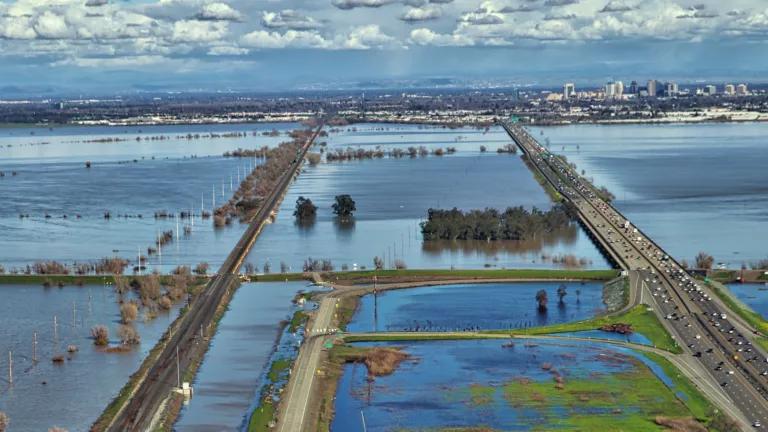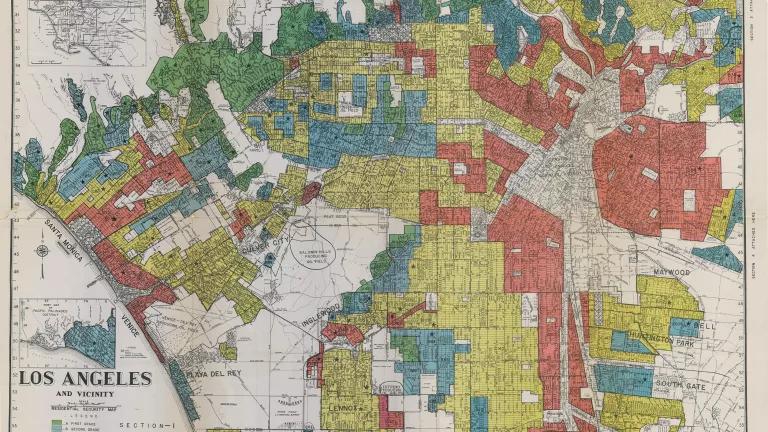This Thursday October 11th, the San Joaquin Valley’s leading thinkers will convene for their eighth annual San Joaquin Valley Fall Policy Conference to discuss the most pressing issues facing the region. According to the agenda, one of the top items for discussion is the valleywide collaboration necessary to implement SB 375 in California’s heartland. We remain optimistic that the Valley’s leaders will use this conference—and the entire SB 375 process—as an opportunity to begin laying the groundwork for healthy, vibrant, and prosperous communities in the San Joaquin Valley.
California’s fastest growing region, the San Joaquin Valley is home to nearly four million residents living in hundreds of cities, towns, and unincorporated communities. The Sustainable Communities Strategies that will be created over the next year—most counties will adopt their plans in October, 2013—provide an opportunity to direct growth and investment toward strengthening these neighborhoods. By focusing growth and investment in existing neighborhoods and infrastructure, redeveloping and repurposing existing structures, and focusing more on infill projects, the SCSs can create convenient places to live where residents can meet their needs without having to drive long distances.
San Joaquin Valley planners can also improve their communities by diversifying the transportation choices available to Valley residents. In total, the Valley’s eight counties will allocate approximately $35 billion in transportation dollars by 2035, which funds could be used to provide residents of all incomes with a variety of high-quality, convenient, and affordable transportation options. A diverse transportation network can give families relief from rising gas prices and significantly improve public health by creating safe and pleasant routes for cyclists and pedestrians.
Economically, the San Joaquin Valley has much to gain from new transportation and housing investments. Dollar for dollar, public transit construction generates 31-70% more jobs than road construction. Additionally, market trends demonstrate that people want and are willing to pay more for homes where they can walk or take public transit. A 2011 Urban Land Institute report showed that in most of California’s urbanized regions, housing supply was not keeping pace with the growing numbers of young people and Baby Boomers with empty nests who want smaller or multi-unit housing. The San Joaquin Valley, which will add 433,000 new households between 2010 and 2035, can use their SCSs as a tool for keeping pace with the evolving housing market.
Some Valley cities have already been proactive in laying the foundation for strong SCSs. In August, the City of Fresno released the initial draft of its long-term development blueprint, the 2035 General Plan. Facing a projected population increase of nearly 60% by 2035 and very poor air quality, the city explored four fundamentally different approaches to meeting Fresno’s needs for the future. A diverse group of residents spanning many cultures and professions came out to a City Council meeting in April to support the infill-oriented Alternative A, which was ultimately adopted. The dramatic benefits of this proposal, as shown in research by Calthorpe Associates, include a 32% reduction in the amount residents will need to drive, savings of over $4,000 per year in gasoline and utility costs for families, and a nearly one-third reduction in health incidents related to air pollution.
Fresno’s process in creating this General Plan demonstrates some of the best practices that we hope other communities in the San Joaquin Valley will utilize in their planning: inclusiveness, a focus on the goals that are most important to residents and to the environment, and the examination of a range of different scenarios. Combined with the lessons learned from the rest of the state, the San Joaquin Valley’s leaders now have the opportunity to become California’s next regional success story.



